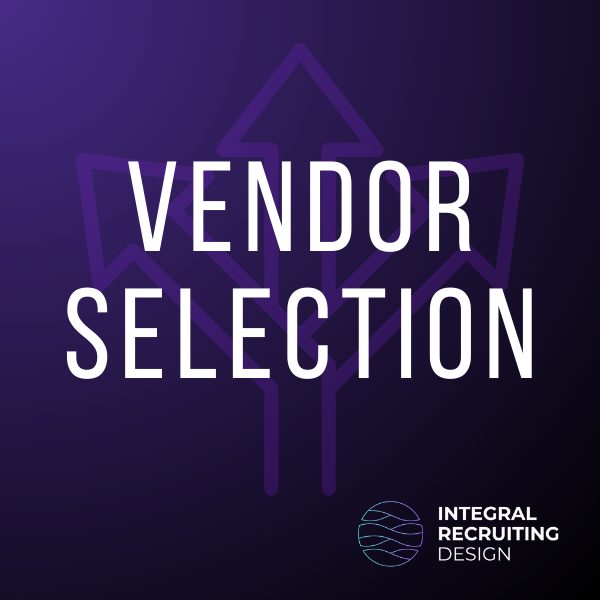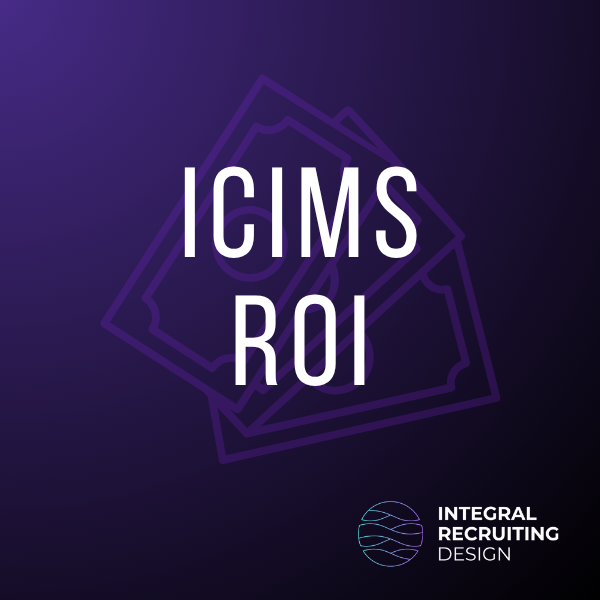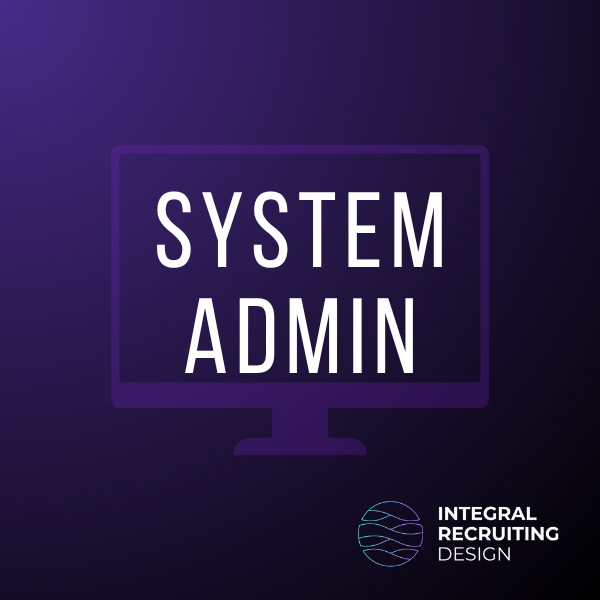Meet Natalie Duncan: A Journey of Passion, Purpose, and Platform Mastery
In this IRD Team Spotlight, I had the joy of sitting down with our teammate Natalie Duncan—a thoughtful, steady presence in the world of iCIMS system administration.
Natalie’s journey into HR tech wasn’t planned. With roots in the hospitality industry, she found her way into the space through curiosity, resourcefulness, and a heart for helping others.
Over time, she’s become a trusted expert and generous mentor—known for blending technical precision with deep empathy for the people behind the platform.
Our conversation offered a meaningful, human-centered look at what it really takes to optimize HR technology like iCIMS. This article shares her insights, lessons, and the values she brings to the work every day.
📽️ Watch the full conversation below:
Why Natalie Chose the iCIMS Admin Path
Natalie’s path into HR tech wasn’t something she mapped out—it unfolded naturally, out of a moment of need and trust. While working at Topgolf during a time of rapid expansion, her director of talent acquisition turned to her for help managing their newly implemented iCIMS platform. Natalie stepped in without hesitation.
“It just fell in my lap,” she recalled. “But there was something about crafting a tool that operators could actually use to improve performance. It clicked for me.”
She took on the system admin role unofficially at first, learning by doing, often through trial and error. That hands-on experience sparked a deep connection between people, process, and technology—something she continues to explore and refine today as a consultant with IRD.
From Lincoln Logs to Large-Scale Hiring
While Natalie didn’t grow up dreaming about configuring ATS workflows, the seeds of her builder mindset were there from the start. As a kid, she played with Lincoln Logs—those simple wooden pieces that invite creativity, planning, and problem-solving. It wasn’t an obsession, she says, but it planted a kind of muscle memory for how things fit together.
Later in life, that same instinct kicked in when she found herself rebuilding one of Topgolf’s most critical processes: their hourly hiring program.
Her grandfather also played a role in shaping her curiosity. “He was the first in our family to use AOL dial-up and send emails,” she said. “He texted the family before anyone else did.” That early exposure to tech—paired with a natural tendency to build—helped shape her approach to HR systems today.
At Topgolf, those qualities came into full focus. In response to post-COVID hiring demands, Natalie led the overhaul of a high-volume hiring process that needed to be fast, scalable, and intuitive for managers on the front lines.
“We had to rethink everything,” she said. “We rebuilt the program in iCIMS with the real end user in mind—chefs hiring cooks, managers making offers on the spot.”
The result was a streamlined system that flexed to meet the moment—powerful behind the scenes, yet simple and accessible for those who needed it most.
Balancing Creativity and Configuration
System administrators often find themselves at the intersection of structure and creativity—part engineer, part artist. For Natalie, that balance isn’t a challenge; it’s the reward.
At IRD, she’s part of the team exploring how emerging tools—especially AI—can be used not just to automate, but to elevate. While much of the conversation around AI in HR centers on efficiency and time savings, Natalie sees something more expansive.
“AI isn’t just about taking tasks off our plate,” she said. “It’s about giving us room to think more deeply and build more meaningfully. That’s where creativity comes in.”
With AI handling the repetitive and predictable, there’s more space to focus on thoughtful design, better user experiences, and meaningful strategic work. And Natalie leans into that opportunity with both curiosity and care.
She’s especially mindful of the human implications. In a field that touches everything from hiring to onboarding to internal mobility, system configurations aren’t just backend choices—they shape how people experience work. And she believes those experiences should feel respectful.
“I want systems to respect the people who use them,” she said. “That’s how you build engagement and trust.”
It’s this philosophy that shapes her approach to every project. Whether she’s leveraging AI to brainstorm solutions, simplifying a workflow, or designing a dashboard, Natalie brings a sense of intentionality to the task.
Because for her, technology isn’t just something we use. It’s something we shape—and in turn, it shapes us. That’s why imagination matters. That’s why empathy matters. And that’s why system admins like Natalie are quietly, steadily changing the game.
Dashboard Design: Keep It Simple, Make It Stick
Ask anyone who’s worked with Natalie, and they’ll tell you: her dashboards just make sense. Clean, intuitive, and refreshingly free of clutter, they’re designed to support—not overwhelm—the end user. And that’s no accident.
“Keep it simple,” she said. “Don’t clutter the dashboard. Give people what they need, and nothing more.”
That philosophy guides every configuration choice she makes. It’s rooted in something deeper than aesthetic preference—it’s about cognitive load, user trust, and respect for people’s time. In the busy day of a recruiter, HR manager, or hiring lead, every extra click adds friction. Natalie builds with that in mind.
One of her signature strategies? Emojis. Not just for fun—but for function.
A green dot means “go.” A red one says “stop.” A bucket icon signals a task that still needs filling. These tiny visual cues provide immediate clarity in a sea of data. For someone juggling dozens of candidates and requisitions, that kind of clarity is more than helpful—it’s grounding.
“If you put too much in front of people, they check out,” she said. “But if it’s clear—a green dot means go—they lean in.”
Natalie has learned this lesson firsthand. In one past role, her team experimented with adding more metrics to user dashboards in hopes of answering common questions before they were asked. But the extra data only created confusion—and within weeks, users were asking to go back to the simplified version.
That experience reaffirmed her approach: clarity over complexity, every time.
Because ultimately, a dashboard isn’t just a data display—it’s a conversation with the user. And Natalie knows how to make that conversation feel supportive, not stressful. The results speak for themselves: cleaner data, higher adoption, and users who trust the tools they’ve been given.
Explaining Tech Without the Jargon
One of Natalie’s quiet superpowers is her ability to take complex system logic and make it instantly understandable. As anyone in HR tech knows, that’s no small feat—especially when the audience includes busy people leaders, frontline managers, or executives who may not have the time (or interest) to decode technical language.
But Natalie has a way of cutting through the noise—often with humor, always with heart.
“It’s like making a peanut butter sandwich,” she said with a grin. “You can’t spread the peanut butter until you open the jar. Same thing in iCIMS—you can’t complete one action until another is done.”
That’s how she explains entrance criteria—a configuration term that might otherwise make people’s eyes glaze over. Instead, she turns it into something visual, familiar, and just a little bit funny.
This isn’t just a teaching tactic. It’s a trust-building move.
Natalie knows that for a system to work well, the people using it need to understand not just how it functions, but why it behaves the way it does. And they need to feel like they’re not being talked down to in the process.
So she tells stories. She draws analogies. She meets people where they are.
“You don’t have to dazzle people with technical vocabulary,” she said. “You just have to make it make sense.”
That mindset has helped her become a bridge between HR operations and system administration—two functions that often speak different languages. By translating the logic behind configurations into plain language, Natalie helps teams align more quickly, collaborate more openly, and trust the system they’re using to do their work.
Because in the end, great tech support isn’t just about fixing problems. It’s about making people feel seen, heard, and capable. And Natalie does that, one peanut butter sandwich at a time.
The Right Tools Make the Work Sustainable
Consulting across multiple clients isn’t for the faint of heart. Priorities shift. Timelines collide. And the volume of context a system admin has to hold—configurations, workflows, user preferences, naming conventions—can quickly become overwhelming. But Natalie brings a sense of steadiness to the chaos.
Part of that, she says, is thanks to the right toolkit.
At IRD, she leans on a thoughtfully curated stack: Monday for project tracking, Notion for knowledge sharing, Slack for real-time communication, and Calendly to manage time across teams and clients. It’s a modern consulting rhythm, built for a fully remote team—and it works.
“These tools let us hand off work seamlessly,” she explained. “Even if someone’s out sick or heads out on vacation, everything’s documented. Nothing gets lost in the shuffle.”
But tools only get you so far. What really sustains Natalie isn’t the software—it’s the why behind the work.
“It’s about helping others do great work,” she said. “That’s always been my why.”
That sense of purpose shines through in how she approaches every task, whether she’s auditing a dashboard, reworking a workflow, or jumping in on a client call. Her presence is calm, clear, and quietly confident—a trait that clients come to rely on and teammates deeply value.
For Natalie, sustainable work isn’t just about managing complexity—it’s about staying grounded in service. Helping others succeed isn’t a byproduct of her job. It’s the point.
Advice for New System Admins
For anyone stepping into the role of HR system administrator for the first time, it can feel like being dropped into the middle of a complex, moving puzzle—full of unfamiliar language, shifting priorities, and high expectations. But Natalie’s guidance for newcomers is both practical and reassuring, grounded in her own lived experience.
Clear your plate.
“Ask for dedicated time to learn. You’ll never get it back once the floodgates open.”
Natalie is a firm believer that the early days in the role are sacred. It’s your one window to slow down, get oriented, and build a foundation before the requests start flying in. Whether you’re new to the company or just taking on a new system, carving out space to focus on learning is essential.
Train daily.
“Use iCIMS Academy. Watch a module, try it out. Build that muscle memory.”
She doesn’t just talk about learning—she practices it. Natalie recommends treating the platform like a language: the more often you use it, the more fluent you become. One module at a time, one test environment at a time—you get better by doing.
Talk to your users.
“Ask what works, what doesn’t. You’ll start to see patterns. Fix what you can. Listen with care to what you can’t.”
Natalie emphasizes that learning doesn’t just happen in the system—it happens through conversation. The people using the platform every day are your most valuable source of insight. And when you take time to truly listen, they’ll tell you what the data can’t.
Join a community.
“I wish System Admin Insights existed when I started. It would have made a huge difference.”
Above all, don’t go it alone. Natalie spent years as a solo admin, and she knows how isolating it can be. That’s why she lights up when she talks about System Admin Insights—because it’s the kind of network she wishes she’d had. A place to learn, share, and grow alongside others doing the same kind of work.
Whether you’re starting fresh or stepping up, Natalie’s message is clear: take the time to learn, listen deeply, and lean into community. You’ll be better for it—and so will the systems you build.
Building Systems with Dignity and Purpose
Toward the end of our conversation, Natalie paused—not to summarize, but to ground everything she’d shared in something deeper. The tools, the dashboards, the workflows—they all matter. But underneath it all is a more essential truth.
“When people feel respected by the systems they use, they engage more. They stay longer. They do better work.”
It’s a simple statement, but it hits hard—because it’s not always the way things are. Too often, HR systems feel like something done to employees instead of for them. Natalie sees it differently. For her, the goal isn’t just efficiency—it’s dignity.
And that belief shows up in every part of her work.
It’s why she doesn’t over-engineer dashboards.
It’s why she uses analogies instead of jargon.
It’s why she slows down to understand what users are really asking for.
Natalie’s approach to iCIMS optimization isn’t just technically sound—it’s emotionally intelligent. She sees systems not as static structures, but as experiences that shape how people feel about their work, their teams, and even themselves.
“The best system admins,” she reflected, “aren’t just solving problems. They’re building relationships—between people and technology, and between teams and truth.”
And in that quiet, steadfast way, Natalie is helping shape a better future for HR tech—one thoughtful configuration at a time.





